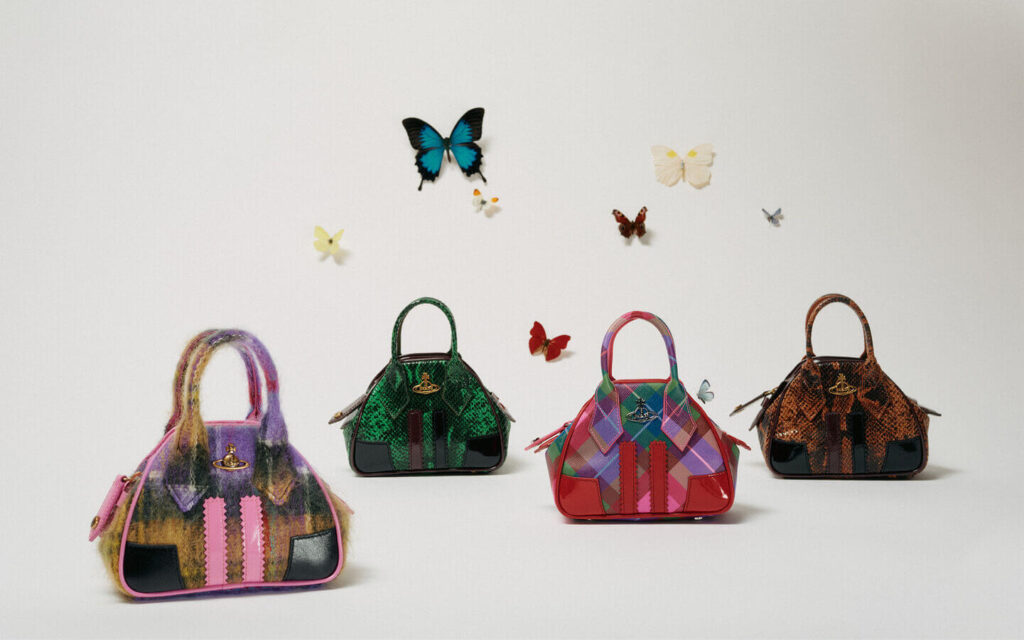
Image Source: Getty
The way you pay for products and experiences looks nothing like it did 10, 15 years ago. You can hover your phone over a device at Sephora, scan a barcode to settle your bill at a restaurant, and now, you might not even need a traditional bank account to make purchases within the beauty industry – or physically own what it is you end up buying.
Today, there is a whole new world of cryptocurrency and blockchain technology available, which started as a plausible system maintaining transactions (e.g. Bitcoin) but has now traversed into the way we see product ownership and creativity. One of these new methods dominating the art, fashion, and beauty worlds is Non-Fungible Tokens (better known by its acronym, NFTs). In fact, the video app TikTok recently announced it’s going to start selling its top viral videos for NFTs, which means someone could buy a makeup tutorial or beauty how-to with digital currency and own that unique look as a collectible.
It’s not just TikTok, of course. More and more beauty brands – from Nars to E.l.f. Cosmetics to Givenchy Beauty – are also experimenting with the digital token, which poses the question: will cryptocurrency change how we exchange and interact with beauty? We explore everything you need to know about the trend below, including what it means for you.
What Are NFTs?
NFTs are a digitalized token that symbolically stands for the original and authentic ownership of a virtual or physical object and idea. Essentially the original authenticity card, it digitally stamps ownership and prevents rights being stolen, replicated, or altered. These items and ideas can then be bid and sold on blockchain platforms for as little or as much value. (Beeple artwork sold for $69 million.) It gives creators, brands, and artists ownership over their own work, finding a new value for creation while blurring the lines between inclusivity and exclusivity, private and public.
NFTs have already made groundbreaking headway in industries like art and luxury fashion, with both Gucci and Virgil Abloh creating unique pieces that transcend a preservation of ownership through a digitized space, and now this technology is making its way to beauty.
NFTs and Their Impact on Beauty Brands
Just this year alone beauty brands have stepped out to explore NFTs with campaigns surrounding exclusive products and artwork. Nars, for example, celebrated its hero blush Orgasm by commissioning a collection of three NFT artworks by artists Sara Shakeel, Azéde Jean-Pierre, and Nina Kraviz. According to Dina Fierro, the brand’s VP of global digital strategy and social engagement, the aim was to “create unique digital works inspired by Orgasm’s sensorial nature and unmistakable hue,” she told POPSUGAR. “As a result we saw a strong response to the pilot from our community as well as digital collectors, and now we are planning to launch additional programs that incorporate virtual goods in 2022.”
Givenchy Parfums also partnered with artists from Rewind Collective and London gallery owner and LGBTQIA+ activist Amar Singh on an NFT Pride digital artwork. Then, E.l.f. Cosmetics created NFTs that allowed customers to purchase their cult classic products such as the Poreless Putty Primer saturated in gold. Creating three of each for E.l.f.’s Poreless Putty Primer, 16HR Camo Concealer, and Ride or Die Lip Balm (nine in total), the products went on sale on the crypto platform Bitski, where the product can be purchased for the same price as retail, but the chance for an E.l.f. Cosmetics community member to purchase the rare, golden collectable.
Image Source: Courtesy of E.l.f. Cosmetics
“The rise of NFTs is driven by the passion consumers have for what NFTs represent – it’s a new way for super fans to be a part of the brands that they love,” said Gayitri Budhraja, the chief brand officer for E.l.f. Cosmetics. “Our goal was to explore new frontiers and disrupt the digital space with the launch of #CryptoCosmetics. We also leaned into the moment to educate our community and help them also explore the space. We designed the Ne.l.f.T’s to be accessible to all, so that anyone with a regular credit card could easily buy one.”
“When beauty brands properly utilize blockchain technology, they can positively impact two sides of business: commerce and marketing.”
Experts say this new ability to purchase creativity and products in beauty is going to have a bigger impact than we know. “Blockchain technology coupled with NFTs and cryptocurrency will be entirely transformative for the beauty industry,” Marc Beckman, the founding partner and CEO of creative agency DMA United said. “Web3’s decentralized nature will provide brands and consumers with a clear path of direct interaction. When beauty brands properly utilize blockchain technology, they can positively impact two sides of business: commerce and marketing. We saw this with Truesy’s program with Nars, where holders of the limited-edition artwork
were able to unlock access to physical merchandise.”
What Beauty Brands Gain From NFTs
As NFTs are designed to only grant ownership over an original file, it puts into question what beauty brands will gain from this level of digital exposure. “Commercially, brands can establish new revenue streams and by way of example, through primary and secondary sales of digital artwork, physical merchandise, or live events,” said Beckman. “Brands can control their messaging and product flow into the marketplace without the typical interruption brought through third-party retailers and media partners.”
That will push brands toward an unlimited intelligence that can write their strategy. He added, “a brand’s reality in the physical world does not need to match its reality in the metaverse, as it can reach new and younger audiences, appear differently, and be active in new and exciting ways.”
While not all brands need an NFT strategy, those that do are able to re-evolve, reconnect, and rebirth areas of the brand toward a younger, digitally adversed targeted market. Increasing the level of connection between brand and consumer, NFTs stand as an untapped opportunity for connection and creation. For the beauty industry at large, “NFTs have the potential to be leveraged in a multitude of ways – as a new medium for creative expression, a mechanism to drive engagement, a tool to enrich loyalty, and/or as an alternate revenue stream as beauty consumers spend more and more of their time in immersive virtual spaces,” said Fierro.
What NFTs Mean For You, the Beauty Consumer
In a market where the success of a brand and beauty product rides on the physical and visible result, some may find there’s a disconnect between NFTs and the beauty consumer. Not granting the owner anything but ownership, NFTs are the token certifying the original file, but this is where it changes the projection for beauty. Instead of a product being the only way to connect with a brand, NFTs provide an opportunity for people to buy into the brand whether it’s through digital collectables, virtual goods, or emerging asset classes – activating new, exciting, and unlimited ways to hyper-connect.
“We believe that NFTs will ultimately empower a deeper connection with Nars’s highest-value and most passionate consumers, empowering self-expression and creativity in immersive digital environments including the metaverse,” Fiero said.
The Downside of NFTs
While NFTs are an invigorating avenue pushing the beauty industry forward, we also can’t forget that it is relatively new with unexpected challenges. For one, NFTs are considered a type of cryptocurrency and so, like any financial risk, this opens up the concern around secure investment and especially long-term investment at that one minute the token can be worth thousands or even millions before the token is dumped, losing its value and worth. It’s because they are currently based on aesthetic and sentimental value, therefore without any concrete grounding their worth and value can be fleeting – causing a concern for any consumer buying into them or wanting to rely on them as a future investment.
Outside of the financial model, NFTs as a token guarantee rights to the original idea, product, or artwork, but this does not stop the original being copied and distributed elsewhere. On top of the risk of duplicates, NFTs also face potential security breaches because hackers can have access to the totally digitalized landscape while the actual sustainability model still weighs quite heavily on the earth due to its power and blockchain usage.
It’s also worth noting that NFTs may have a negative impact on the environment.
It’s also worth noting that NFTs may have a negative impact on the environment because of the massive amount of energy and carbon emissions it takes to create them. While it’s a hotly debated topic, and one that needs more data into just how high its carbon footprint and the impact, the truth is that this model is not necessarily the most sustainable.
In the end, NFTs are new to the world of beauty and, though exciting and interesting, can also come with its challenges that have yet to be ironed out. Still, it is clear that they are leveraging a new hand in beauty and shuffling to the forefront of an expansive and digitalized space. While from a brand perspective, not all beauty companies need an NFT strategy or product in order to cultivate revenue – and, in the same breath for the beauty consumer, while it draws you in to your favorite brand’s DNA by owning one-off collectables, it is also a gamble in the speculative front of cryptocurrency and finances – you could call it an investment of sorts that is still finding its footing in the industry.





More Stories
Elegance With an Edge: luxury bags by Vivienne Westwood
Why Dive Bomb Silhouettes Save You Time and Energy
Timeless Sophistication: Why an Exquisite Timepiece Still Resounds in a Digital Era